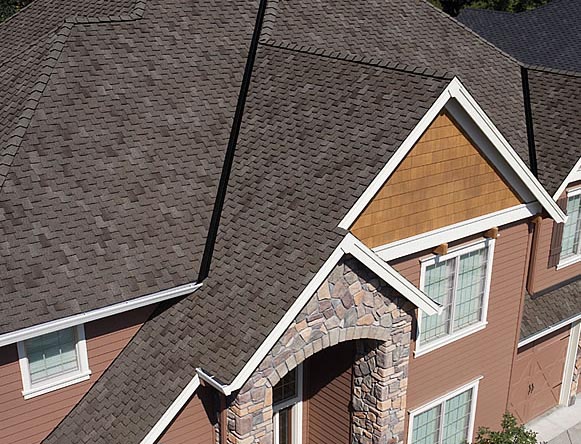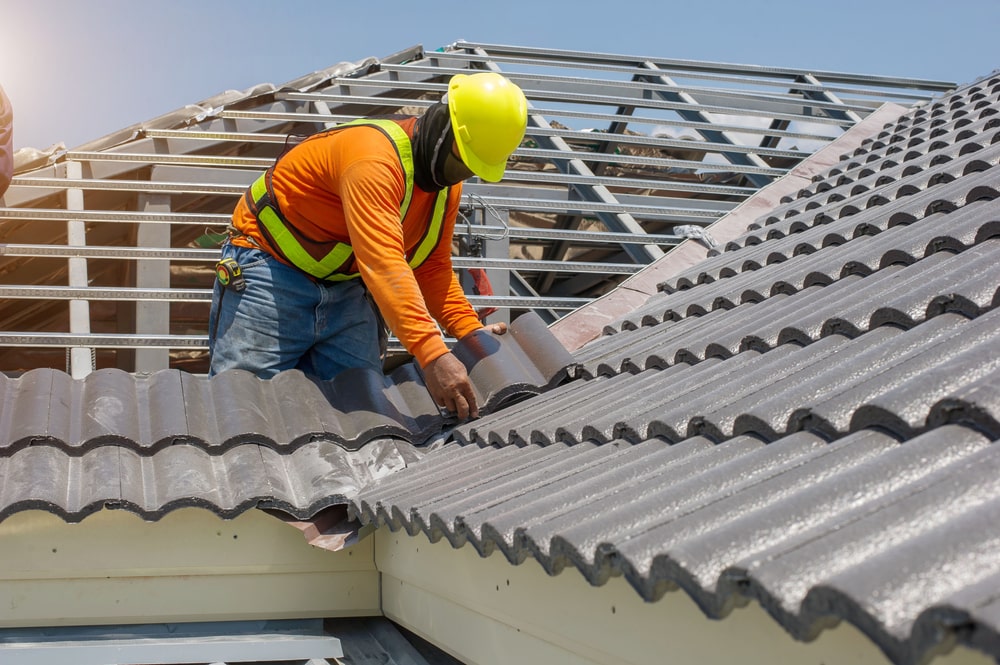The Benefits of Dealing With Gainesville FL Roofing Companies
The Benefits of Dealing With Gainesville FL Roofing Companies
Blog Article
Best Practices for Ensuring Appropriate Roof Covering Ventilation
A balanced intake and exhaust air vent ratio, generally 1:300, plays a critical duty, with consumption vents preferably positioned at the lower edge of the roofing for cool air entrance and exhaust vents at the top for cozy air departure. Maintaining insulation away from vents is crucial to prevent air movement limitation.
Understand Ventilation Fundamentals
Correctly comprehending air flow essentials is necessary for making sure the long life and effectiveness of roof systems. Efficient air flow mitigates dampness buildup and temperature level extremes in the attic, both of which can cause substantial structural damage over time. A well-ventilated roof aids in protecting against common concerns such as mold growth, wood rot, and ice dams, which can endanger the integrity of the roof materials and the underlying structures.
The primary objective of ventilation is to facilitate the activity of air, permitting a constant exchange between the indoor and exterior settings. This balance is achieved with a combination of consumption and exhaust vents that collaborate to preserve optimal airflow. Intake vents, typically situated along the soffits or eaves, enable fresh air to enter the attic room area, while exhaust vents, commonly situated at or near the roof ridge, allow warm, damp air to leave.
Trick elements influencing the performance of roof covering ventilation include proper positioning, sufficient sizing, and guaranteeing that both intake and exhaust vents are unhampered. Routine examination and maintenance are vital to recognize prospective clogs, damage, or inadequacies in the air flow system, consequently protecting the roof covering's efficiency and sturdiness.
Sorts Of Roof Vents
Roof covering vents play a crucial duty in keeping reliable attic room ventilation and, by extension, the overall health and wellness of the roof system. Various kinds of roof vents are available, each with unique benefits customized to details roofing demands.

Soffit vents are set up under the eaves and operate in tandem with roofing vents to ensure a well balanced intake and exhaust system. By enabling cooler air to get in from below, soffit vents help with the expulsion of hot air through upper vents. Gable vents, situated on the exterior walls of the attic, offer one more effective solution, especially in homes with saddleback roofs.
Evaluate Your Present Air Flow

Next, consider the age and problem of your roof covering materials and air flow elements. Older systems might not follow current building regulations or might have worn away gradually, reducing their performance. Conduct a comprehensive examination to determine any indicators of deterioration, such as rust, damage, or voids look at this site that might compromise the system's performance.
In addition, determine the attic temperature level and moisture levels. Heats and moisture can indicate poor ventilation - gainesville fl roofing companies. Utilize a hygrometer and thermometer to obtain precise readings, contrasting them with exterior problems. Relentless disparities recommend prospective problems that need dealing with.
Installment Best Practices
Efficient installment of roofing ventilation systems is extremely important for ensuring ideal performance and longevity. Proper setup begins with understanding the certain air flow demands of the roofing and the structure it covers. This involves determining the right ratio of consumption to exhaust vents, generally sticking to the 1:300 policy, which specifies one square foot of air flow for every 300 square feet of attic room flooring room.

Intake vents need to be installed at the roof's lower edge, frequently in the soffits, to enable amazing air to get in. Exhaust vents, on the various other hand, must be set up near or at the roofing system's height to facilitate the departure of cozy, wet air.
Seal all vent links meticulously to avoid air leaks and possible water seepage. Use high-grade materials and comply with maker standards to guarantee longevity and performance. In addition, incorporating ridge vents with baffles can substantially enhance air movement efficiency by avoiding wind-driven rainfall and snow from going into the attic room.
Inevitably, specific installation of roof ventilation systems reduces potential issues such as mold development, ice dams, and architectural damages, ensuring the roofing's honesty and the structure's general wellness.
Normal Upkeep Tips
Uniformity in upkeep methods is fundamental to making certain the long-term effectiveness of roofing air flow systems. Throughout these inspections, make certain that vents are totally free of particles, nests, and other blockages that might restrain air flow.
Use a soft brush or a vacuum cleaner to remove dirt and particles from consumption and exhaust vents. Be cautious not to damage the air vent displays or louvers throughout the process.
Proper insulation is just as essential. Make certain Visit This Link that attic room insulation does not obstruct the vents, as this can significantly limit air flow. Rearrange or replace it to keep a reliable barrier. if any kind of insulation has changed or settled.
Finally, change any kind of damaged or missing out on parts without delay. Damaged vents, split tiles, or shabby blinking can all add to inadequate air flow and should be dealt with without hold-up. Normal maintenance makes sure that the roof covering air flow system operates ideally, thereby expanding the life-span of the roofing itself.
Verdict
Making sure appropriate roofing ventilation is vital for preserving the efficiency and sturdiness of a roof. Adherence to the 1:300 intake and exhaust air vent proportion, coupled with the calculated positioning of vents, is necessary. Routine semiannual evaluations, debris cleaning, and making certain insulation does not block airflow are essential methods. Executing these best practices will certainly promote a well-ventilated roof, thus alleviating potential concerns connected to moisture accumulation and extreme warm, ultimately extending the roof's life expectancy.
A well balanced consumption and exhaust air vent proportion, typically 1:300, plays a crucial duty, with intake vents preferably positioned at the lower edge of the roofing for trendy air entry and exhaust vents at the height for cozy air leave. Intake vents, usually located along the eaves or soffits, enable fresh air to enter the attic area, while exhaust vents, frequently positioned at or near the roofing ridge, enable hot, humid air to leave.
Soffit vents are set up under the eaves and work in tandem with roof vents to guarantee a well balanced intake and exhaust system. By enabling cooler air to get in from below, soffit vents assist in the expulsion of warm air via upper vents. Adherence to the 1:300 consumption and exhaust air vent why not try this out proportion, coupled with the strategic positioning of vents, is important.
Report this page